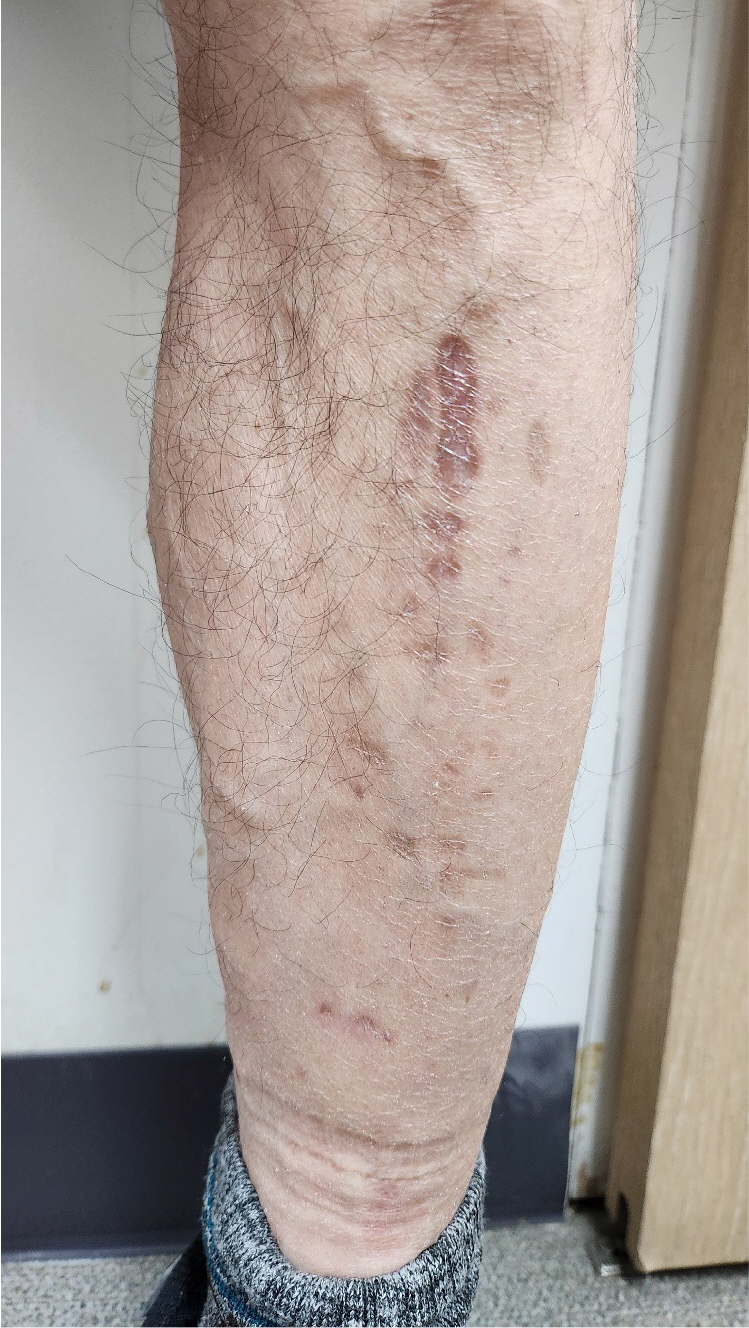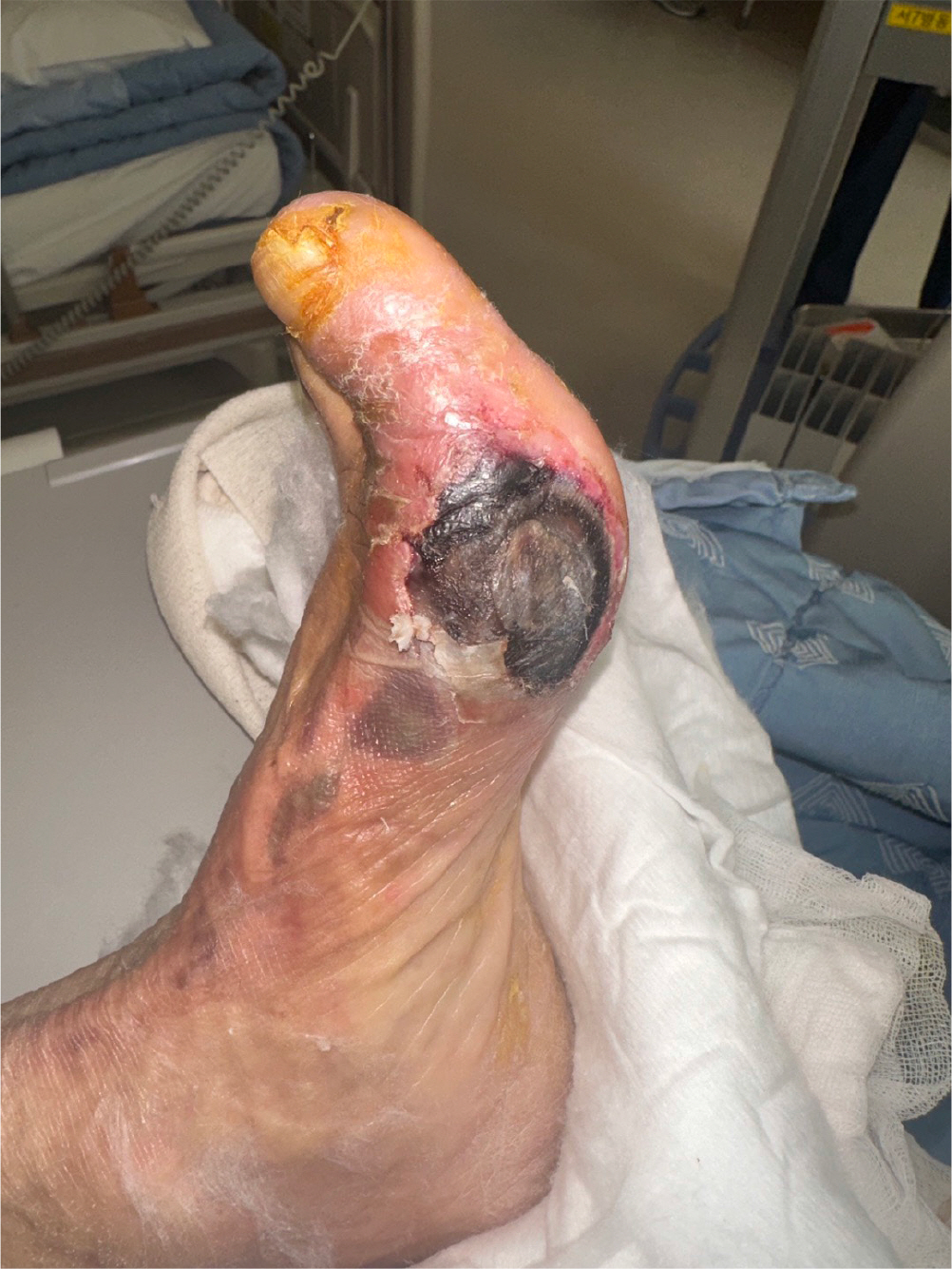J Korean Diabetes.
2023 Mar;24(1):29-34. 10.4093/jkd.2023.24.1.29.
Diabetes and Skin Disease
- Affiliations
-
- 1Division of Endocrinology and Metabolism, Department of Internal Medicine, National Medical Center, Seoul, Korea
- KMID: 2540918
- DOI: http://doi.org/10.4093/jkd.2023.24.1.29
Abstract
- Skin disorders in patients with diabetes mellitus are common but easy to overlook. The spectrum of diabetes-associated skin disease is wide and ranges from benign to life-threatening conditions. Early detection of skin lesion is important since cutaneous manifestation may precede diagnosis of diabetes mellitus. Skin disease may be a signal of underlying diabetes mellitus in undiagnosed patients or can represent poorly controlled status in diagnosed patients. If some skin disorders such as diabetic foot can be prevented, considerable socioeconomic burden can be avoided. In addition, control of blood glucose level may help treat some diabetic skin diseases. Therefore, clinicians who manage patients with diabetes mellitus should be familiar with diabetic skin diseases since their diagnosis and early treatment can improve quality of life. This review aims to describe the epidemiology, clinical presentations, diagnosis, and treatment of diabetic skin diseases.
Keyword
Figure
Reference
-
1.Bae JH., Han KD., Ko SH., Yang YS., Choi JH., Choi KM, et al. Diabetes fact sheet in Korea 2021. Diabetes Metab J. 2022. 46:417–26.2.Demirseren DD., Emre S., Akoglu G., Arpacı D., Arman A., Metin A, et al. Relationship between skin diseases and ex-tracutaneous complications of diabetes mellitus: clinical analysis of 750 patients. Am J Clin Dermatol. 2014. 15:65–70.3.Sanches MM., Roda Â., Pimenta R., Filipe PL., Freitas JP. Cutaneous manifestations of diabetes mellitus and prediabetes. Acta Med Port. 2019. 32:459–65.4.Bustan RS., Wasim D., Yderstræde KB., Bygum A. Specific skin signs as a cutaneous marker of diabetes mellitus and the prediabetic state — a systematic review. Dan Med J. 2017. 64:A5316.5.Lima AL., Illing T., Schliemann S., Elsner P. Cutaneous manifestations of diabetes mellitus: a review. Am J Clin Dermatol. 2017. 18:541–53.6.Higgins SP., Freemark M., Prose NS. Acanthosis nigricans: a practical approach to evaluation and management. Dermatol Online J. 2008. 14:2.7.Treesirichod A., Chaithirayanon S., Chaikul T., Chansakul-porn S. The randomized trials of 10% urea cream and 0.025% tretinoin cream in the treatment of acanthosis nigricans. J Dermatolog Treat. 2021. 32:837–42.8.Morgan AJ., Schwartz RA. Diabetic dermopathy: a subtle sign with grave implications. J Am Acad Dermatol. 2008. 58:447–51.9.Duff M., Demidova O., Blackburn S., Shubrook J. Cutaneous manifestations of diabetes mellitus. Clin Diabetes. 2015. 33:40–8.10.Shemer A., Bergman R., Linn S., Kantor Y., Friedman-Birn-baum R. Diabetic dermopathy and internal complications in diabetes mellitus. Int J Dermatol. 1998. 37:113–5.11.Hines A., Alavi A., Davis MDP. Cutaneous manifestations of diabetes. Med Clin North Am. 2021. 105:681–97.12.Yosipovitch G., Hodak E., Vardi P., Shraga I., Karp M., Spre-cher E, et al. The prevalence of cutaneous manifestations in IDDM patients and their association with diabetes risk factors and microvascular complications. Diabetes Care. 1998. 21:506–9. Erratum in: Diabetes Care 1998 21 1032.13.O'Toole EA., Kennedy U., Nolan JJ., Young MM., Rogers S., Barnes L. Necrobiosis lipoidica: only a minority of patients have diabetes mellitus. Br J Dermatol. 1999. 140:283–6.14.Lowitt MH., Dover JS. Necrobiosis lipoidica. J Am Acad Dermatol. 1991. 25(5 Pt 1):735–48.15.Sibbald C., Reid S., Alavi A. Necrobiosis lipoidica. Dermatol Clin. 2015. 33:343–60.16.Levy L., Zeichner JA. Dermatologic manifestation of diabetes. J Diabetes. 2012. 4:68–76.17.Larsen K., Jensen T., Karlsmark T., Holstein PE. Incidence of bullosis diabeticorum—a controversial cause of chronic foot ulceration. Int Wound J. 2008. 5:591–6.18.Lipsky BA., Baker PD., Ahroni JH. Diabetic bullae: 12 cases of a purportedly rare cutaneous disorder. Int J Dermatol. 2000. 39:196–200.19.Dryden M., Baguneid M., Eckmann C., Corman S., Stephens J., Solem C, et al. Pathophysiology and burden of infection in patients with diabetes mellitus and peripheral vascular disease: focus on skin and soft-tissue infections. Clin Mi-crobiol Infect. 2015. 21(Suppl 2):S27–32.20.Bertoni AG., Saydah S., Brancati FL. Diabetes and the risk of infection-related mortality in the U.S. Diabetes Care. 2001. 24:1044–9.21.Murphy-Chutorian B., Han G., Cohen SR. Dermatologic manifestations of diabetes mellitus: a review. Endocrinol Metab Clin North Am. 2013. 42:869–98.22.Hanna W., Friesen D., Bombardier C., Gladman D., Hanna A. Pathologic features of diabetic thick skin. J Am Acad Dermatol. 1987. 16(3 Pt 1):546–53.23.Forst T., Kann P., Pfützner A., Lobmann R., Schäfer H., Beyer J. Association between “diabetic thick skin syndrome” and neurological disorders in diabetes mellitus. Acta Dia-betol. 1994. 31:73–7.24.Cole GW., Headley J., Skowsky R. Scleredema diabeticorum: a common and distinct cutaneous manifestation of diabetes mellitus. Diabetes Care. 1983. 6:189–92.25.Rongioletti F., Kaiser F., Cinotti E., Metze D., Battistella M., Calzavara-Pinton PG, et al. A multicentre study of charac-teristics, comorbidities, course and therapy in 44 patients. J Eur Acad Dermatol Venereol. 2015. 29:2399–404.26.Papanas N., Maltezos E. The diabetic hand: a forgotten complication? J Diabetes Complications. 2010. 24:154–62.
- Full Text Links
- Actions
-
Cited
- CITED
-
- Close
- Share
- Similar articles
-
- Skin Disorders of Diabetes Mellitus Patients
- The Occurrence and Management of Adverse Skin Events due to Continuous Glucose Monitoring
- Sympathetic skin response in diabetes mellitus
- Four Cases of Acquired Perforating Disease in Patients with Chronic Renal Failure
- Morphea and Verruca Plana Complicated in Central Diabetes Insipidus




